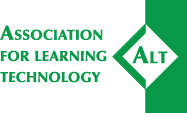Price, Geraldine (2006) Creative solutions to making the technology work: three case studies of dyslexic writers in higher education. Association for Learning Technology Journal, 14 (1). pp. 21-38. ISSN 0968-7769
|
PDF
Available under License Creative Commons Attribution Non-commercial No Derivatives. Download (89kB) | Preview |
Abstract
Research into the behaviours manifested by the dyslexic condition has often focused upon younger dyslexic pupils and the lower‐order skill difficulty in decoding and encoding. A surge in interest in the writing process has shifted the focus to higher‐order skills, and a growing body of research is emerging within the higher education context (Hughes & Suritsky, 1994; McNaughton et al., 1997; Hatcher, 2001; Singleton & Aisbett, 2001; Farmer et al., 2002). Students are expected to be ‘expert’ writers, and the mark of a good student is the ability to use writing as a tool for thinking. Drawing upon data from semi‐structured interviews with undergraduate and postgraduate dyslexic students and their real‐time writing logs, three case studies are presented and used to explore creative ways of using technology to manage dyslexia. The students demonstrate how they use different types of software to overcome writing anxiety, ‘fear of the blank page’ syndrome and issues of plagiarism. The experiences of the students within the case studies demonstrate that often simple software can provide the best solutions, and that students combine features from software programs in creative ways to compensate for weaknesses in their cognitive profile.
| Item Type: | Article |
|---|---|
| Subjects: | L Education > LB Theory and practice of education L Education > LC Special aspects of education > LC1022 - 1022.25 Computer-assisted Education |
| Divisions: | ALT-J Journal |
| Depositing User: | Justin Smith |
| Date Deposited: | 10 Apr 2009 09:21 |
| Last Modified: | 04 Apr 2011 09:28 |
| URI: | http://repository.alt.ac.uk/id/eprint/106 |
Actions (login required)
 |
View Item |
